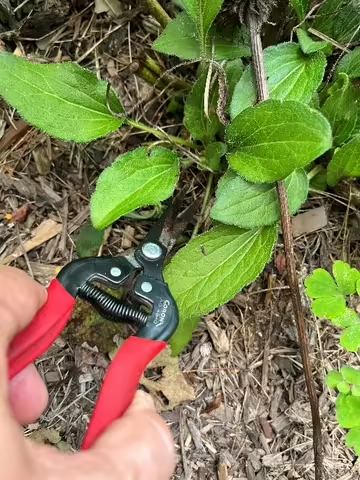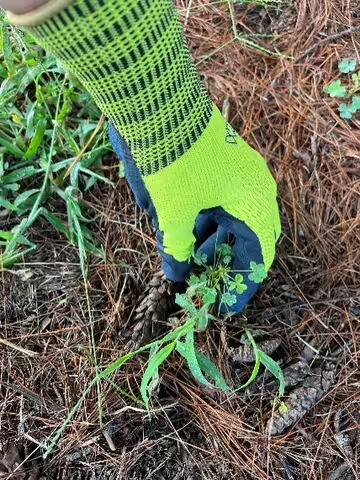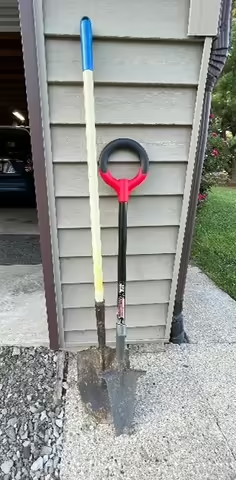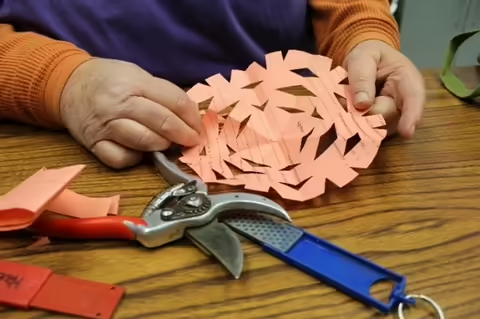Evidently every day this summer I deemed too hot to work in the garden was just another day for the weeds to celebrate and use their heat-miser advantage over me to grow and multiply. As a result, I am now spending most of my gardening time attempting to catch up on weeding in an effort to go into winter somewhat weed-free. I have also been editing plant composition in beds by removing excess numbers of the more aggressive species. The Missouri coneflower (Rudbeckia missouriensis) is one such plant that would take over the entire yard in a sea of gold if given free reign, but its beauty and usefulness as a cut flower and pollinator plant makes that need for editing a good trade off.
It has taken me decades to build a collection of gardening hand tools. Many have evolved over time to meet my specific needs, often resulting in different types of the same tool for different tasks. My original tool for weeding and plant editing was my hand, but after years of grasping and pulling, my hand demanded assistance. I have tried many hand weeding tools over the years…dandelion weeders, hori hori (soil knife), etc. Oddly enough, my “favorite” weeding and plant editing tool today is a pair of Corona long curved snips (AG 4940) that are designed for harvesting grapes. It just so happens its curved narrow tip is great for inserting into the soil and snipping plants off just below the soil line. Know your weeds though, and how they reproduce. Some are like the Hydra monster: for every head chopped off, two grow back. Anything with creeping rhizomes or underground storage structures like a bulb are not controlled with this method. For all else, I use the snips to take out anything herbaceous as well as woody less than ¼” diameter (small tree seedlings), and the stress on my hand is greatly reduced.
Gloves are an important tool as well, and I lean towards seamless nylon with nitrile-coated palms and fingertips for general garden use. This provides protection against dirt and minor scrapes without hindering dexterity; so much so I can text on my phone without taking my gloves off. On the flip side, these are not the gloves to wear when pruning anything with thorns or prickles or work near intense heat. Nitrile really retains heat and from stupidity experience, I can tell you getting hot stretchy gloves off after getting too close to a burn pile is not an experience soon forgotten.
Recently, I had the sad job of removing a large oakleaf hydrangea that was failing. Removing the upper canopy with long-handled pruning loppers was tedious, but not taxing. The stump was something else entirely. If I wanted to plant something else in its place, the stump had to go. I first dug around the stump with a Radius Garden Root Slayer Perennial Shovel. I learned about this shovel when visiting a nursery that field dug daylilies and it was their shovel of choice. I wish I had known about this shovel sooner because its narrow tapering serrated blade really cuts through soil along with any small roots, making it perfect for digging and dividing herbaceous perennials…and also digging shrub stumps. If I hit a root too big for the shovel to cut through, out came the reciprocating saw outfitted with a pruning blade. In no time, I had the stump dug out and cut away. The stump weighed in at just over 12 pounds and where once was an oakleaf hydrangea, is now a giant-sized hosta.
For years I use to take my collection of pruning tools for sharpening to the late Nancy Kruescheck, co-owner of Naturescapes. She was expert at sharpening tools and her goal was to put such an edge on hand pruners as to be sharp enough to cut paper snowflakes! Nancee passed away in 2020 and my pruners have never been as sharp, but knowing they can be makes me keep trying to improve my skill. I recently passed an enjoyable Labor Day afternoon sharpening pruning tools with my husband in our barn with the doors open to the sight and sound of falling rain. I sharpened the edges using diamond sharpening stones, working from coarse to extra fine, followed by surface oiling to prevent rusting before handing them off to my husband for blade adjustment and testing on branches gathered from the brush pile. Even though our dog Sophia chewed up more branches than the pruners and more oil was spilled on the floor than applied to metal, it was still a great way to enjoy the rain without getting wet and having a good reason not to be weeding.





